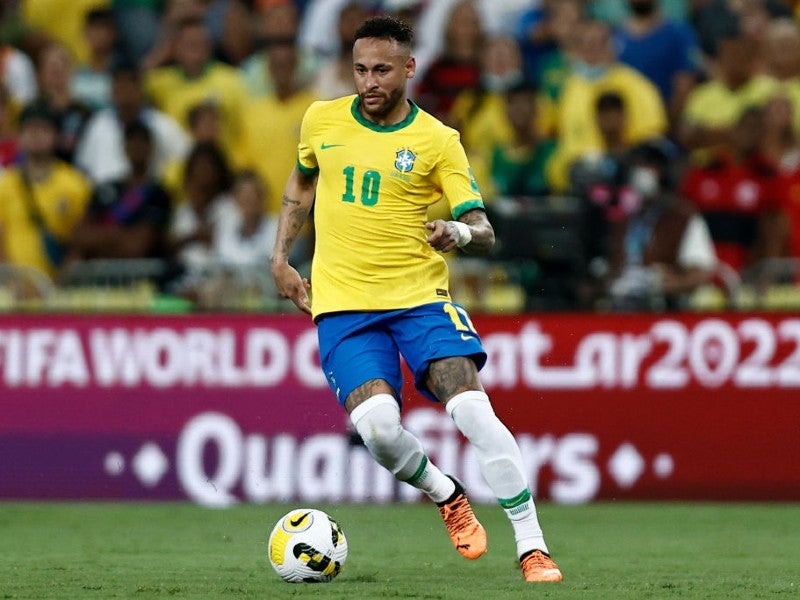
Nike’s annual tournament spend for soccer’s upcoming 2022 FIFA World Cup has reached an estimated $147.75 million as the US sportswear giant looks to retain its dominance in the kit supplier market over rival brands, according to a new GlobalData Sport report.
GlobalData’s ‘Business of the FIFA 2022 World Cup’ report reveals Nike has secured 40.63% visibility at the flagship national teams competition by securing kit supplier deals with 13 of the 32 teams participating in the tournament – almost double the amount acquired by close rival Adidas.
In recent years, the American brand has invested heavily to land some of the biggest contracts in international soccer compared to its rivals.
Its portfolio for this year’s World Cup consists of some of the biggest nations involved, including many of the favorites to win such as Brazil, France, and England. Others include the Netherlands, Portugal, Australia, Canada, Croatia, South Korea, Poland, Saudi Arabia, the United States, and host nation Qatar.
Jake Kemp, sport analyst at GlobalData, said: “Nike is set for a 64.58% visibility across all tournament group stage games at this World Cup. The depth of their portfolio with larger and ‘better’ teams in the competition means this could rise to 70.31% across all games (based on knockout stages going against each team’s official world rankings).”
The report said Nike’s estimated annual tournament spend of $147.75 million exceeds that of rival brands Adidas and Puma, who spent $95.33 million and $11.5 million, respectively.

US Tariffs are shifting - will you react or anticipate?
Don’t let policy changes catch you off guard. Stay proactive with real-time data and expert analysis.
By GlobalDataHowever, Adidas’ average spend surpasses Nike’s, with the German brand only holding kit supply deals with seven nations.
Adidas’ portfolio for Qatar 2022 includes Germany, Belgium, Spain, Argentina, Japan, Mexico, and Wales, while Puma’s contains Serbia, Switzerland, Uruguay, Ghana, Morocco, and Senegal.
The remaining kit supplier brands with visibility at the World Cup include Hummel (Denmark), Marathon (Ecuador), Majid (Iran), Kappa (Tunisia), New Balance (Costa Rica), and One All Sports (Cameroon).
Kemp added: “The influence of the biggest kit supplier brands over the market, in general, is well illustrated by this World Cup, with Adidas and Puma being the only other brands affiliated to multiple teams and deals.
“The three global brands have been the biggest spending brands in European domestic soccer over the past few seasons, and their influence is not just limited to one continent. There is a large unified market with international soccer, whereby brands are able to appeal to an entire national population to sell replica kits and promote their businesses.”
Alongside Adidas, Nike has dominated the soccer market for several decades spanning domestic and international soccer, establishing itself as one of the main go-to brands at the elite level of the sport.
At club level, Nike has landed long-term deals with several high-profile clubs, including a contract with Italian giants Inter Milan until 2030 and French champions Paris Saint-Germain until 2032. The brand is also a kit supplier to England's Liverpool until 2025, as well as Spanish giants Barcelona until 2028.
At the league level, Nike entered long-term partnerships with the US' National Women’s Soccer League, while it also agreed a long-term extension with domestic governing body US Soccer.
However, it has also recently lost several deals, including Spanish soccer’s Granada, who agreed a long-term supply deal with Adidas, and Italian club AS Roma, who swapped Nike for New Balance. Ukrainian soccer giants Shakhtar Donetsk dropped the American brand in favor of Puma.
Meanwhile, Qatar 2022 organizers have announced FIFA World Cup sponsor Budweiser’s beer stands at the eight World Cup stadiums have been moved to less prominent areas just days before the tournament starts.
Alcohol sales are strictly regulated in the majority-Muslim kingdom, but the country said it would respect FIFA’s commercial partnerships when bidding for the World Cup in 2009, including its long-standing partnership with brewer AB InBev.
In September, the organizers confirmed a beer sales policy covering the stadiums and official FIFA-authorized fan sites.
However, just days before the first games, the agreement has been modified to limit the visibility of Budweiser-branded sales tents within stadium perimeters.
In a statement, AB InBev said: “AB InBev was informed on November 12 [of the change] and is working with FIFA to relocate the concession outlets to locations as directed. We are working with FIFA to bring the best possible experience to the fans.”
Under the tournament's alcohol policy, beer with alcohol can be served before and after games in the stadium perimeter, while only alcohol-free Bud Zero can be served during games and within the stadium bowl.
Champagne, wines, and spirits, as well as beer, will be served at stadium restaurants and lounges for corporate hospitality clients. Fans staying in premier hotels and three cruise ships hired by organizers as floating hotels can also access a range of alcoholic drinks.
The 2022 FIFA World Cup in Qatar begins on Sunday (November 20) and will end on December 18.
Image: Buda Mendes/Getty Images



